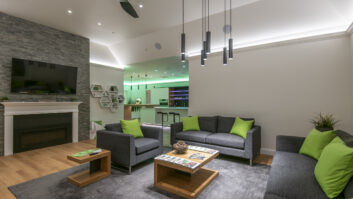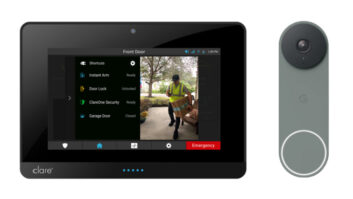CHICAGO – Fantem USA pushed back retail availability of its Oomi home-automation system to the end of October from late summer to give it more time to finalize features, which include an NFC-based tap-to-pair process that simplifies setup.
The Z-Wave-based system is one of few mass-market home-automation systems that integrate control of home systems with a home entertainment system.
Fantem also plans to restart its Indiegogo crowdfunding campaign at the end of March at the earliest, having interrupted the campaign to finalize features, said Colin Marshall, Fantem USA VP of business development.
The company, which will also sell direct to consumers, is owned by individuals and manufacturer Fantem China, which launched its first home-automation product, a Z-Wave hub, two years ago in Asia.
With the Oomi launch, the Chinese manufacturer is expanding its home-automation selection to include smart plugs, smart RGB bulbs, a hub, an air-quality sensor and an Android-based Wi-Fi A/V streamer, which plugs into a TV’s HDMI port to stream audio and video from the Cloud via downloaded Google Play apps. All will be the first Fantem products available in the U.S.
The products will be monitored and controlled from a tablet-like hand-held touchscreen controller, which incorporates Z-Wave to communicate with the Cube hub, smart plugs, RGB light bulbs, and other Z-Wave accessories. The controller also features Wi-Fi, used for viewing video from the hub’s built-in security camera, and Bluetooth 4.0 LE, used to control the A/V streamer.
The company hasn’t decided whether to enable streamer control from Bluetooth-equipped Android or Apple smartphones.
The hub also incorporates Wi-Fi, enabling Android and iOS mobile devices to control Oomi systems via Wi-Fi from within the home and, through a broadband connection, via cellular from remote locations. The hub also delivers alerts to remote smartphones, which display security-camera video and listen in via the Cube’s microphone.
The hub also incorporates Bluetooth, which will be available for future functions, Marshall said.
The Cube hub also brings other capabilities to an Oomi system. The Cube incorporates night-vision HD security camera, motion sensor, temperature sensor, humidity and glass-break sensors, and light sensor. Its embedded IR blaster shoots IR signals in all directions through its IR-permeable chassis to control a homeentertainment system. It hasn’t been decided whether the Cube will host a database of IR codes, incorporate IR learning, or both.
A separate multi-sensor device incorporates motion, temperature, humidity and light sensors. A separate air-quality sensor, which plugs into the back of the hub, checks levels of allergens, volatile organic compounds, and fine particulates.
To set up an Oomi system, consumers tap the NFCequipped tablet controller against Oomi devices, automatically connecting the devices to the Oomi system and populating the controller with the widgets pertinent to the devices. The consumer can then customize the widget, adding room names, for example. Smart plugs can be paired without being plugged into an electrical outlet.
Typical Z-Wave setup, in contrast, requires users to press a button on a device to send a signal to a hub, and then use an app to find and name the device, Marshall said.
Three kits will be available at launch, each at $449.
The energy kit consists of the Cube hub, one smart plug and the Oomi Touch controller. The ambiance kit consists of one RGB bulb, the Cube and the Touch. And the security kit consists of the multi-sensor, Cube and Touch.
The kits will be available at $279 for Indiegogo backers.
The RGB bulb, multi-sensor, and smart plug will also be sold separately at $49.99, and the air-quality sensor is tentatively set at $89. The streamer’s price hasn’t been set.












